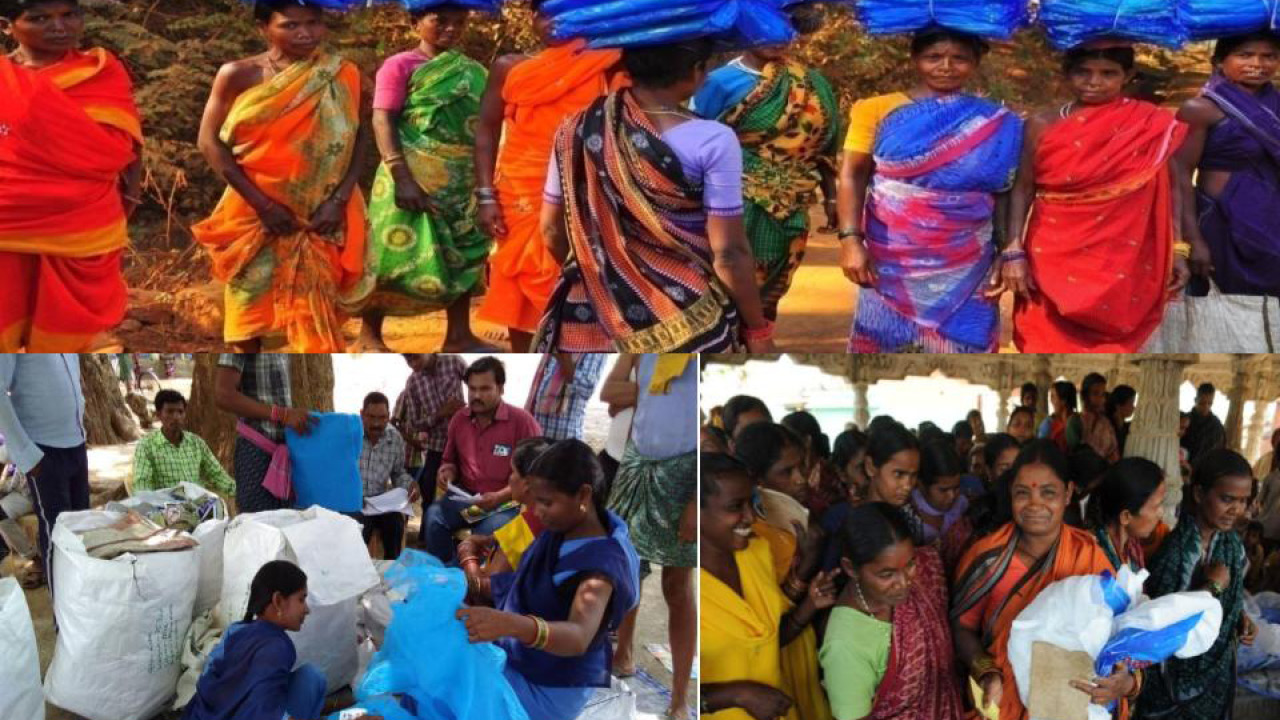Long Lasting Insecticidal Nets (LLIN) Distribution in Tribal areas with Multisectoral Approach, Health & Family Welfare Department, Government of Odisha

Effective Malaria Control through Insecticidal Nets Distribution in Odisha
Problem
- High Malaria Cases: Over 4 lakh reported cases before LLIN distribution
- Heterogeneous Malaria Paradigm: Complex vector bionomics led to inconsistent transmission patterns
- Falciparum Malaria: High prevalence of the dangerous falciparum strain of malaria
- Accessibility: Presence of hard-to-reach endemic regions
- Other Elimination Challenges: Multi-faceted issues affecting malaria elimination
Solution
- LLIN Distribution: Supply of 1.56 crore Long Lasting Insecticidal Nets (LLIN) under Global Fund to fight AIDS, Tubercolosis and Malaria (GFTAM) and Domestic Budgetary Support
- Community Engagement: Gaon Kalyan Samitis (GKS) played a pivotal role in distribution and monitoring
- Transparency: Record-keeping ensured complete transparency in the distribution process
- Complete Coverage: A strategy to completely saturate districts with LLIN
- Collaborative Approach: Involvement of all government sectors, political platforms, and other stakeholders
Outcomes
- Dramatic Reduction: Malaria cases reduced by approximately 94% after two rounds of LLIN distribution
- Significant Mortality Decrease: Malaria-related deaths dropped by 83%
- Universal Coverage: 100% target population was both targeted and covered
- Community Ownership: Greater involvement of civil society organizations, PRIs, and administrative leadership at all levels
- Successful Convergence: Inter-sectoral efforts and involvement of civil society organisations and PRI members
Project Details
Category: Reducing Malaria Related Mortality
Project: Long Lasting Insecticidal Nets (LLIN) distribution in Tribal areas with Multisectoral approach
Organisation: National Vector Borne Disease Control Programme, Health & Family Welfare Department, Government of Odisha
Start Date: 01-Jan-2017
Problem
Prior to the intervention, Odisha was grappling with a severe malaria problem with over 4 lakh reported cases. The situation was complicated by a heterogeneous malaria paradigm influenced by complex vector bionomics, leading to erratic and widespread transmission. Adding to this was the high burden of the particularly dangerous falciparum strain of malaria. Compounding the challenges were hard-to-reach malaria endemic regions, making prevention and treatment efforts even more difficult. Together, these factors painted a grim picture, indicating the necessity for a multi-pronged and robust intervention.
Solution
To combat the dire malaria situation, Odisha received a massive boost in the form of 1.56 crore Long Lasting Insecticidal Nets (LLIN) under GFTAM and DBS support in 2020-21. Recognising the effectiveness of LLIN in personal protection against malaria, the state embarked on an ambitious distribution strategy. With state-specific guidelines in place, the Gaon Kalyan Samitis (GKS) formed under NHM became the backbone of the distribution mechanism, ensuring not only widespread coverage but also transparency and rigorous monitoring. Complementing this grassroots approach were the high-level steering committees formed at various administrative levels, and a collaborative strategy involving all sectors of the government, political platforms, and other relevant stakeholders. The overarching strategy aimed at total saturation, ensuring that entire districts were covered with LLIN.
Outcomes
The results of the LLIN distribution in Odisha were nothing short of spectacular. From an alarming figure of over 444,842 malaria cases and 77 deaths, the post-deployment statistics showcased a massive reduction to just 25,503 cases and 13 deaths. This equated to a reduction of around 94% in malaria cases and a heartening 83% decrease in malaria-related mortality. These statistics were not merely numbers but a testament to the sheer effectiveness of the program, and the collective effort put in at all levels, from grassroots community involvement to high-level administrative collaboration. The case of Odisha stands as a shining example of how systematic planning, comprehensive coverage, and community ownership can overcome even the most daunting of health challenges. Continual monitoring and sustained efforts will be essential to ensure that these gains are maintained, and that Odisha moves closer to completely eradicating malaria.

